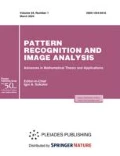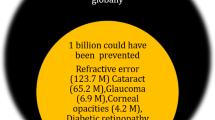Abstract
With the development of iris recognition technology, sensors of iris images acquisition are being constantly developed and updated. Re-register users every time a new sensor is deployed is time-consuming and complicated, especially in applications with large-scale registered users. Therefore, it is a challenging problem to choose the common recognition model which is effective for multi-source heterogeneous iris recognition(MSH-IR). The paper proposes a efficient neural network model of stacked Convolutional Deep Belief Networks-Deep Belief Network (CDBNs-DBN) for MSH-IR. The main improvements are two parts: firstly, this model uses the region-by-region extraction method and positions the convolution kernel through the offset of the hidden layer to locate the effective local texture feature structure. Secondly, the model uses DBN as a classifier in order to reduce the reconstruction error through the negative feedback mechanism of the auto-encoder. Experimental results have been implemented on publicly available IIT Delhi iris database, which is captured by three different iris captured sensors. Experiments shows the model performs strong robustness performance and recognition ability.









Similar content being viewed by others
REFERENCES
J. Daugman, “600 million citizens of India are now enrolled with biometric ID,” SPIE Newsroom, May 7 (2014).
J. Liu, Robust Recognition of Heterogeneous Iris Images (Univ. Sci. Technol. China, Hefei, Anhui, PR China, 2014).
A. Ross and A. Jain, “Biometric sensor interoperability: A case study in fingerprints,” in International Workshop on Biometric Authentication (Springer, Berlin, Heidelberg, 2004), pp. 134–145.
G. Yang, G. T. Zhou, Y. Yin, et al., “K-means based fingerprint segmentation with sensor interoperability,” EURASIP J. Adv. Signal Process. 2010 (1), 729378 (2010).
Y. Wang and S. Huang, “Identity recognition of heterogeneous dorsal hand vein based on LBP and multi-layer structure,” Pattern Recognit. Lett. 82 (2), 154–161 (2016).
L. Haixia, Z. Qing, W. Qing, et al., “Study of sensor interoperability of features on lung CT images,” J. Xidian Univ. 43 (1), 157–161 (2016).
R. Connaughton, A. Sgroi, K. W. Bowyer, et al., “A cross-sensor evaluation of three commercial iris cameras for iris biometrics,” in CVPR 2011 Workshops (IEEE, 2011), pp. 90–97.
R. Connaughton, A. Sgroi, K. Bowyer, et al., “A multialgorithm analysis of three iris biometric sensors,” IEEE Trans. Inf. Forensics Secur. 7 (3), 919–931 (2012).
N. Popescu-Bodorin, L. S. Grigore, V. E. Balas, et al., “Cross-sensor iris recognition: LG4000-to-LG2200 comparison” (2018). arXiv:1801.01695.
R. He, W. S. Zheng, T. Tan, et al., “Half-quadratic-based iterative minimization for robust sparse representation,” IEEE Trans. Pattern Anal. Mach. Intell. 36 (2), 261–275 (2013).
L. Xiao, Z. Sun, R. He, et al., “Coupled feature selection for cross-sensor iris recognition,” in 2013 IEEE Sixth International Conference on Biometrics: Theory, Applications and Systems (BTAS) (IEEE, 2013), pp. 1–6.
J. K. Pillai, M. Puertas, and R. Chellappa, “Cross-sensor iris recognition through kernel learning,” IEEE Trans. Pattern Anal. Mach. Intell. 36 (1), 73–85 (2013).
B. Kaur, S. Singh, and J. Kumar, “Cross-sensor iris spoofing detection using orthogonal features,” Comput. Electr. Eng. 73, 279–288 (2019).
N. Liu, M. Zhang, H. Li, et al., “DeepIris: Learning pairwise filter bank for heterogeneous iris verification,” Pattern Recognit. Lett. 82, 154–161 (2016).
A. Gangwar and A. Joshi, “DeepIrisNet: Deep iris representation with applications in iris recognition and cross-sensor iris recognition,” in 2016 IEEE International Conference on Image Processing (ICIP) (IEEE, 2016), pp. 2301–2305.
F. Marra, G. Poggi, C. Sansone, et al., “A deep learning approach for iris sensor model identification,” Pattern Recognit. Lett. 113 (2018), pp. 46–53.
K. Nguyen, C. Fookes, A. Ross, et al., “Iris recognition with off-the-shelf CNN features: A deep learning perspective,” IEEE Access 6, 18848–18855 (2017).
H. Lee, R. Grosse, R. Ranganath, et al., “Unsupervised learning of hierarchical representations with convolutional deep belief networks,” Commun. ACM 54 (10), 95–103 (2011).
D. H. Ackley, G. E. Hinton, and T. J. Sejnowski, “A learning algorithm for Boltzmann machines,” Cognit. Sci. 9 (1), 147–169 (1985).
G. E. Hinton, “A practical guide to training restricted Boltzmann machines,” in Neural Networks: Tricks of the Trade (Springer, Berlin, Heidelberg, 2012), pp. 599–619.
A. Fischer and C. Igel, “An introduction to restricted Boltzmann machines,” in Iberoamerican Congress on Pattern Recognition (Springer, Berlin, Heidelberg, 2012), pp. 14–36.
J. G. Daugman, “High confidence visual recognition of persons by a test of statistical independence,” IEEE Trans. Pattern Anal. Mach. Intell. 15 (11), 1148–1161 (1993).
S. Patil, S. Gudasalamani, and N. C. Iyer, “A survey on Iris recognition system,” in 2016 International Conference on Electrical, Electronics, and Optimization Techniques (ICEEOT) (IEEE, 2016), pp. 2207–2210.
J. G. Daugman, “High confidence visual recognition of persons by a test of statistical independence,” IEEE Trans. Pattern Anal. Mach. Intell. 15 (11), 1148–1161 (1993).
H. I. Ashiba, H. M. Mansour, H. M. Ahmed, et al., “Enhancement of infrared images based on efficient histogram processing,” Wireless Pers. Commun. 99 (2), 619–636 (2018).
IIT Delhi Iris Dataset. https://www4.comp.polyu.edu.hk/~csajaykr/database.php.
A. Kumar and A. Passi, “Comparison and combination of iris matchers for reliable personal authentication,” Pattern Recognit. 43 (3), 1016–1026 (2010).
A. S. Al-Waisy, R. Qahwaji, S. Ipson, et al., “A multi-biometric iris recognition system based on a deep learning approach,” Pattern Anal. Appl. 21 (3), 783–802 (2018).
J. Daugman, “How iris recognition works,” in The Essential Guide to Image Processing (Academic Press, 2009), pp. 715–739.
G. Huo, Q. Zhang, H. Guo, et al., “Multi-source heterogeneous iris recognition using locality preserving projection,” in Chinese Conference on Biometric Recognition (Springer, Cham, 2019), pp. 304–311.
K. Sun, X. Yin, M. Yang, et al., “The face recognition method based on CS-LBP and DBN,” Math. Probl. Eng. 2018 (2018).
X. Jin, C. Ma, Y. Zhang, et al., “Classification of lung nodules based on convolutional deep belief network,” in 2017 10th International Symposium on Computational Intelligence and Design (ISCID) (IEEE, 2017), Vol. 1, pp. 139–142.
X. W. Wang, C. Wang, and Y. Y. Zhang, “Research on SNR of point target image,” Electron. Opt. Control 17 (1), 18–21 (2010).
ACKNOWLEDGMENTS
We thank the anonymous referees for their thorough reviews and constructive comments. The research in this paper uses the IIT Delhi Iris Database provided by Indian Institute of Technology Delhi.
Funding
This research is supported by Science and technology development plan project of Jilin Province (grant no. 20180520017JH), Science and technology project of the Jilin Province Education Department (grant no. JJKH20180448KJ), Jilin Province Industrial Innovation Special Fund Project (grant no. 2019C053-2).
Author information
Authors and Affiliations
Corresponding authors
Ethics declarations
The authors declare that there is no conflict of interests regarding the publication of this paper.
Additional information

Guang Huo received his PhD degree from the College of Computer Science and Technology, Jilin University, China, in 2016. He is an associate professor and supervisor of Master with Northeast Electric Power University. His research interests include pattern recognition, machine learning, biometrics, and image processing.

Qi Zhang was born in Changchun, China in 1992. Currently a third-year of postgraduate at the School of Computer Science and Technology, Northeast Electric Power University, China. Her research interests iris recognition.

Yangrui Zhang was born in Jilin, China in 1981. She received his M.A. degrees from the School of Foreign languages at Northeast Normal University in China in 2006. She is a senior lecturer with the School of Foreign languages at Northeast Electric Power University. Her research interests include linguistics, semantic analysis, and machine learning.

Yuanning Liu received the Ph.D. degree from Jilin University, China, in 2004. He completed the PhD Research with the University of Vienna, Austria, in 2007. He was a Visiting Scholar with the University of Missouri, USA, in 2015. He is currently a Professor in computer science with Jilin University. His research interests include software engineering, iris biometrics, pattern recognition, and bioinformatics.

Huan Guo was born in Changchun, China in 1994. Currently a second-year of postgraduate at the School of Computer Science and Technology, Northeast Electric Power University, China. Her research interests Iris recognition.

Wenyu Li was born in Changchun, China in 1994. Currently a second-year of postgraduate at the School of Computer Science and Technology, Northeast Electric Power University, China. Her research interests Iris recognition.
Rights and permissions
About this article
Cite this article
Guang Huo, Zhang, Q., Zhang, Y. et al. Multi-Source Heterogeneous Iris Recognition Using Stacked Convolutional Deep Belief Networks-Deep Belief Network Model. Pattern Recognit. Image Anal. 31, 81–90 (2021). https://doi.org/10.1134/S1054661821010119
Received:
Revised:
Accepted:
Published:
Issue Date:
DOI: https://doi.org/10.1134/S1054661821010119




